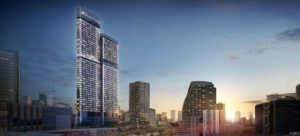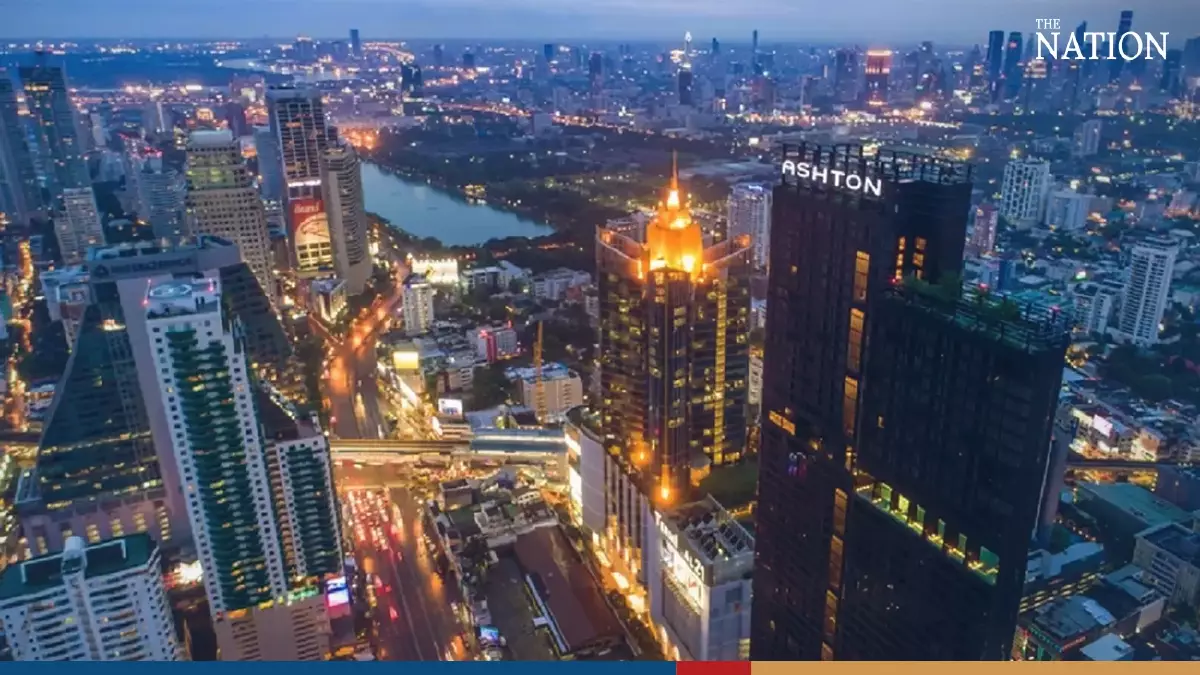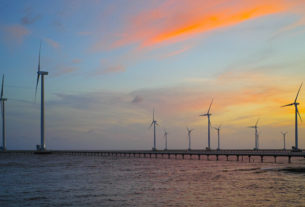
Ministry of Transport: Bangkok’s Ashton Asoke must fix entrance/exit issues by 2024
Update in the Ashton Asoke Sukhumvit 21 case after one year, “Surapong Piyachote” Deputy Minister of Transport revealed there has been progress in the case and was confident that it will be beneficial to the 668 condominium unit owners without having to demolish the building.
It is expected that there will be a solution within this year. Deputy Permanent Secretary, MOT, suggested that Mass Rapid Transit Authority of Thailand ( MRTA ) should utilize the land by the expropriation objectives.
The one-year timeline for the Ashton Asoke Sukhumvit 21 or Ashton Asoke case will end in July 2024. Ashton Asoke Condominium was ruled by the Supreme Administrative Court that its construction permit was unlawfully issued on July 27, 2023.
The ruling affected condominium owners who have already transferred ownership of 668 condominium units out of a total of 733 condominium units and have filed a petition to request fairness to the Ministry of Transport as a supervisor of the MRTA, which owns the entrance and exit area of the condominium project.
On October 24, 2023, the Ministry of Transport ordered to appointment of a working group to determine solutions to the problem and alleviate the impact on the people related to the Ashton Asoke Condominium case. The working group is led by Sorapong Paitoonphong, Deputy Permanent Secretary, MOT. Recently, it was found that efforts to solve the problem have made progress continuously under clear guidelines and ensuring that there is a solution beneficial to all 668 condominium unit owners.
The Deputy Minister of Transport states that there will be a resolution this year.
Surapong Piyachote, Deputy Minister of Transport, revealed that from October 2023 to the present, the Ministry of Transport’s working group has held several meetings and reported that there has been fair progress, and is considering relevant legal procedures to determine the solution to this problem as there are many government agencies, especially the MRTA and Bangkok Metropolitan Administration (Bangkok), are involved in the case. The working group is confident that it will be able to find a resolution within 2024.
“The resolution to the Ashton Asoke project will be based on the benefit of the residents. Currently, we are looking at the relevant laws to solve the problem as, currently, residents are the ones who are seriously affected and not the project owners. For 8-9 months until now, we have been trying to find a way to help the residents. Our resolutive guidelines are to allow residents (condominium unit owners) to be able to use the existing entrance and exit, which is already permitted by the MRTA and will also be permitted by the BMA.”
Surapong also explained that in the past, the application for a construction permit submitted by the Ashton Asoke project had all the elements required by law (a permit from MRTA which allowed the project to use the expropriated area as an entrance and exit. The same MRTA permit was later used as a supporting document to apply for a construction permit from BMA, which was granted by the BMA.) The project construction was commenced then. As the construction of the Ashton Asoke Condominium Project has already been completed, it may not be possible to demolish the buildings.
“The process to solve Ashton Asoke issue is quite complex because it involved many agencies, including an order of the Supreme Administrative Court in July 2023, expropriation law, regulations for applying to use the entrance and exit of MRTA that had been granted to Ashton Asoke. As there are many parties involved, it requires a lot of time. Nonetheless, I am sure that, in the end, the residents (condominium unit owners) will be able to use the existing entrance and exit. We used the plot of land for the construction of Skytrain, BTS station and parking lots which already fulfilled the objectives of land expropriation. The problem lies in the usage of land for entrance and exit and is the main issue that must be resolved,” Mr Suraphong said.
668 Condominium Unit Owners Seriously Affected
The problems with this project date back to 2014, when it applied for a total of 9 permits from 8 agencies. The emphasis is on obtaining a permit to build an entrance and exit to the project on expropriated land. In this regard, the project received a permit from MRTA. The MRTA’s permit was then used as supporting documents to apply for a construction permit from BMA and was legally granted the permit.
The Company began piling works and completed construction in 2018 and gradually transferred ownership of condominium units to customers. Presently, a total of 668 condominium units were transferred. Later, the Central Administrative Court made a ruling in 2021 and the Supreme Administrative Court issued a ruling in 2023 that BMA had unlawfully issued a construction permit because the permit to use the entrance and exit of MRTA is invalid.
The highlight is that the Administrative Court’s decision came after Ashton Asoke transferred ownership of 668 condominium units to customers. Recently, there was a positive signal from the Ministry of Transport’s working group that there may be a solution for the project to be able to operate legally according to expropriation laws.
Residents are advised to request permission to use the area from MRTA.
Mr Sorapong Paitoonphong, Deputy Permanent Secretary, MOT, and Head of the Working Group to determine solutions to the problem and alleviate the impact on the people related to the Ashton Asoke Condominium case said that in the past 8 months, there is a way to find a solution for condominium owners without having to demolish the building.
Presently, BMA, who granted the construction permit, has not issued an order under Section 41 of the Building Control Act regarding the entrance-exit of the Ashton Asoke Condominium Project as the Bangkok South Civil Court has issued a temporary injunction according to complaints from affected residents which has been in effect since September 25, 2023.
However, the Ashton Asoke case involves the ruling of the Supreme Administrative Court whose jurisdiction cannot be interfered with by Government agencies. As a result, the working group has not made any public statement regarding the progress of the resolutive approach. Nonetheless, the working group held several meetings and expected to find a resolution to this problem to aid, solve and alleviate the impact on the affected people.
“During the working group meetings, we found many possible solutions. There is one approach that unit owners can take immediately, which is to jointly issue a letter with their signatures to the MRTA requesting the MRTA to consider that the land which is used as an entrance-exit to the Ashton Asoke Condominium Project has already fulfilled the objectives of the land expropriation from construction of Skytrain and other related parts. This approach has not been taken because the affected condominium unit owners may not be aware of the process. Therefore, a letter has not been sent directly to the MRTA,” Mr. Sorapong said.
Brainstorm Ideas to Unlock the Land Restrictions
A source from the Ministry of Transport’s working group added that one of the solutions for the Ashton Asoke case can refer to a law that focuses only on land plots that MRTA allowed to be used as entrance-exit for the project. The area has a width of 6.5 meters in the expropriated part of MRTA (road width of 13 meters, 6.5 meters of which is under the title of the original land. Later, the project requested MRTA to rent additional expropriated land of 6.5 meters to be used as an entrance exit to the project).
Therefore, according to this approach, it must be proven to the Administrative Court that the use of a land plot as an entrance and exit with a width of 13 meters would allow MRTA to take full utilization of the expropriation objectives. “In the past, the expropriated land has been used for three purposes: construction of the Skytrains, construction of BTS station and parking lots. Nonetheless, there is still a legal issue regarding the use of an additional land plot of 6.5 meters as entrance-exit, which will allow MRTA to take full utilization of the expropriation objectives.”
The recommendation is that MRTA should utilize the area which is used as the entrance and exit of the project to be fully beneficial for the expropriation objectives, similar to other projects permitted by MRTA. After that, the residents shall issue a letter requesting to use the expropriated land as the entrance and exit of the project to allow MRTA to consider issuing a valid permit to use the entrance and exit.
Source: https://www.nationthailand.com/blogs/business/property/40039400


